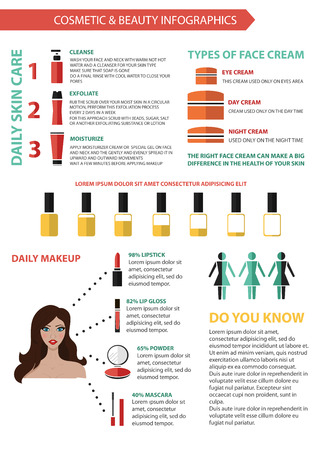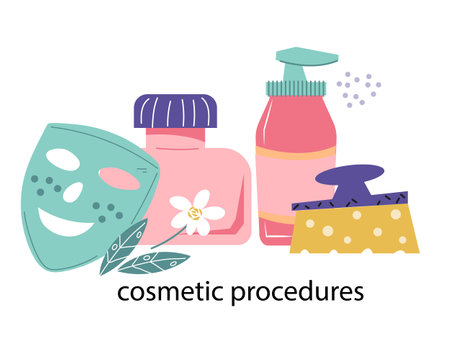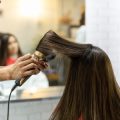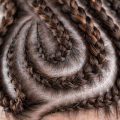Understanding Your Hair Texture
Before you can choose the best styling products, it’s important to understand your hair texture. Every texture has different needs, and using the wrong product can leave your hair feeling heavy, greasy, or dry. Let’s break down the main hair textures so you can figure out where your hair fits in.
Hair Thickness: Fine, Medium, or Coarse
Hair thickness refers to the diameter of each individual strand. Heres how to tell what category you fall into:
| Hair Type | Description | Common Needs |
|---|---|---|
| Fine | Strands are thin and may feel silky; can be easily weighed down by heavy products. | Lightweight volumizing products; avoid oils and heavy creams. |
| Medium | Not too thick or thin; holds styles well and is generally easy to manage. | Flexible styling options; mousse, gels, light creams work well. |
| Coarse | Strands are thicker and may feel rougher; often more resistant to heat and chemical treatments. | Moisturizing and smoothing products; heavier creams and oils are beneficial. |
Hair Pattern: Straight, Wavy, or Curly
Your natural hair pattern also plays a big role in choosing styling products. Here’s how they differ:
| Texture Type | Description | Styling Considerations |
|---|---|---|
| Straight | Lies flat from root to tip; often shinier because natural oils travel easily down the shaft. | Use lightweight serums for shine; avoid heavy products that flatten volume. |
| Wavy | S-shaped strands with some body; can get frizzy depending on humidity. | Use defining creams or salt sprays to enhance waves; control frizz with anti-humidity products. |
| Curly | Curls range from loose loops to tight spirals; tends to be drier due to oil not traveling as easily down the strand. | Opt for moisturizing curl creams, leave-ins, and gels that define without crunchiness. |
How to Identify Your Hair Texture at Home
Step 1: Check a Clean Strand of Hair
Wash your hair and let it air dry without any product. Take one strand between your fingers. If you barely feel it, its fine. If it feels like sewing thread, its medium. If it feels wiry or thick, its coarse.
Step 2: Observe Your Natural Pattern Without Styling Products
After washing and drying naturally, look at your hairs shape. If it falls straight with no bend, youre straight. If you see a soft wave or loose curve, youre wavy. Spirals or coils mean curly hair.
The more you understand about your unique hair texture—both its thickness and natural pattern—the easier it becomes to select styling products that actually work for you. In the next section, well dive into matching specific product types with each texture for best results.
2. Why Hair Texture Matters in Product Selection
When it comes to choosing the right styling products, your hair texture plays a huge role. Not all products work the same way on every hair type. Using the wrong formula can lead to issues like product buildup, limp strands, or uncontrollable frizz. That’s why understanding your texture is key to picking products that actually work for you.
How Different Hair Textures React to Styling Products
Hair texture refers to the thickness and shape of each individual strand, as well as how much natural wave or curl it has. Heres a quick breakdown of how different textures typically respond to styling products:
| Hair Texture | Common Traits | Best Product Types | What to Avoid |
|---|---|---|---|
| Fine/Thin | Lacks volume, easily weighed down | Lightweight mousse, volumizing spray, dry shampoo | Heavy creams, thick oils, wax-based pomades |
| Medium | Balanced structure and density | Creams, light serums, flexible-hold gels | Overuse of heavy oils or protein treatments |
| Thick/Coarse | High density and often more porous | Rich creams, butters, strong-hold gels | Watery sprays that don’t offer control or moisture |
| Curly/Wavy | Prone to frizz and dryness | Curl creams, leave-in conditioners, anti-frizz serums | Alcohol-heavy sprays that dry out curls |
| Kinky/Coily | Tightly coiled, very dry and fragile | Heavy moisturizers, hair butters, oils for sealing moisture | Sulfate-based products that strip natural oils |
The Impact of Using the Wrong Products
If you’ve ever felt like your hair looks flat after applying a new cream or becomes frizzier with a styling spray, your texture might be reacting poorly to the product’s ingredients or weight. Fine hair gets greasy fast with thick formulas. Coarse or curly textures may become brittle without enough moisture. It’s not just about what the product promises — it’s about how your specific texture responds to it.
Buildup Happens When…
- You use heavy products on fine or low-porosity hair.
- You layer too many styling products without cleansing properly.
- You use silicone-based products without clarifying regularly.
Limpness Happens When…
- You apply rich creams or oils on fine hair types.
- You skip volumizing agents on medium-to-fine textures.
- Your scalp gets oily due to product overload.
Frizz Happens When…
- Your hair lacks moisture (especially curly/coily textures).
- You use drying alcohols in sprays and gels.
- You don’t seal in hydration after washing.
The bottom line? Matching your styling products to your texture isn’t optional — it’s essential for healthy-looking hair that behaves the way you want it to. In the next section, we’ll break down how to identify your exact hair texture so you can shop smarter and style easier.

3. Best Styling Products for Fine Hair
If you have fine hair, you know the struggle of keeping volume without making your strands look flat or greasy. The key is to use lightweight styling products that provide lift and texture without weighing your hair down.
Top Product Types for Fine Hair
Here are some go-to styling products that work wonders for fine hair textures:
| Product Type | What It Does | Why Its Great for Fine Hair |
|---|---|---|
| Lightweight Mousse | Adds volume and hold without stiffness | Provides body while keeping hair soft and touchable |
| Volumizing Spray | Lifts roots and enhances fullness | Easy to apply at the crown for instant height |
| Texturizing Spray | Creates grip and separation for styling | Makes hair appear fuller with a natural finish |
| Dry Shampoo (Volumizing Formula) | Absorbs oil and adds instant lift | Refreshes styles without needing to wash hair daily |
Tips for Using Styling Products on Fine Hair
- Start small: Use a small amount of product to avoid buildup.
- Focus on roots: Apply volumizing sprays or mousse mainly at the roots to create lift where it’s needed most.
- Avoid heavy creams: Thick creams or oils can flatten fine strands.
- Blow-dry upside down: This technique helps boost volume when paired with the right products.
The right combination of lightweight, volumizing products can transform fine hair from limp to full of life. Experiment with different formulas to see what gives your strands the perfect balance of body and movement.
4. Top Picks for Thick, Coarse, or Curly Hair
Thick, coarse, and curly hair types need products that can deliver serious moisture, control, and definition. These hair textures are naturally drier and more prone to frizz, so using the right styling products makes a huge difference in keeping your curls defined and your strands manageable. Whether youre rocking natural curls or have thick waves, here are some top product picks to help you get the best results.
Creams: Moisture + Control
Styling creams are great for adding hydration while offering light hold and definition. They’re perfect if you want soft, touchable curls without stiffness.
| Product | Benefits | Best For |
|---|---|---|
| Moroccanoil Curl Defining Cream | Enhances natural curl pattern and adds shine | Curly & coarse hair |
| SheaMoisture Curl Enhancing Smoothie | Deep moisture with light hold | Thick & dry curls |
Gels: Definition + Hold
If your curls tend to lose shape or get frizzy fast, styling gels can help lock them in place while maintaining definition. Look for alcohol-free formulas to avoid drying out your hair.
| Product | Benefits | Best For |
|---|---|---|
| Eco Styler Olive Oil Gel | Strong hold with moisture retention | Coarse & coily hair types |
| Aunt Jackies Dont Shrink Flaxseed Elongating Curling Gel | Adds definition and stretch to tight curls | Curlier textures (Type 3C–4B) |
Oils: Hydration + Frizz Control
Hair oils seal in moisture, smooth out frizz, and add a beautiful shine—especially important for coarse and curly strands that tend to be on the drier side.
| Product | Main Ingredients | Key Benefits |
|---|---|---|
| Mielle Organics Rosemary Mint Scalp & Hair Strengthening Oil | Rosemary oil, castor oil, biotin | Nourishes scalp, strengthens ends |
| Briogeo Dont Despair, Repair! Strengthening Treatment Oil | Ceramides, rosehip oil, algae extract | Smooths frizz and restores softness |
Pro Tips:
- Layer Wisely: Start with a cream for moisture, add gel for hold, then finish with a few drops of oil to seal everything in.
- Avoid Heavy Build-Up: Use clarifying shampoos occasionally to remove product residue.
- Apply on Wet Hair: Most curl-defining products work best when applied to soaking wet or very damp hair.
The key is finding what works best for your unique texture. Don’t be afraid to mix and match until you find your perfect combo!
5. Tips for Mixing and Layering Products Effectively
Getting the most out of your hair styling routine isn’t just about choosing the right products — it’s also about how you apply them. When layered properly, styling products can work together to give you long-lasting hold, shine, and definition without weighing down your hair or making it feel greasy. Heres how to layer like a pro based on your hair texture:
Start Light and Build Up
A good rule of thumb is to start with the lightest product and work your way up. This prevents buildup and ensures each product does its job without interfering with the others.
Layering Order Guide
| Product Type | Purpose | When to Apply |
|---|---|---|
| Leave-in Conditioner | Hydration & Detangling | Right after washing, on damp hair |
| Serum or Oil | Add Shine & Smooth Frizz | After leave-in, focusing on ends |
| Mousse or Foam | Add Volume & Light Hold | Smooth through roots and mid-lengths |
| Cream or Curl Enhancer | Define Texture & Control Flyaways | Scrunch into curls or smooth over waves/coils |
| Gel or Pomade | Create Hold & Shape | The final layer for lasting style |
Avoid Product Overload Based on Your Hair Texture
Your hair’s texture plays a big role in how much product you should use and which combinations work best. Here’s a quick breakdown:
Selecting the Right Combo by Hair Texture:
| Hair Texture | DOS (Recommended) | DONTS (Avoid) |
|---|---|---|
| Straight & Fine Hair |
|
|
| wavy Hair (2A–2C) |
|
|
| Curlier Textures (3A–3C) |
|
|
| Kinky/Coily Hair (4A–4C) |
|
|
A Few Extra Tips for Success:
- Avoid mixing too many products from different brands. Some ingredients don’t play well together and can cause flaking or residue.
- Treat your hands like tools. Warm up creams between your palms before applying — this helps spread product more evenly.
- If your style needs a refresh mid-week, try water first! Reactivating products with a bit of water often works better than piling more on.
- If it feels sticky or greasy, youre using too much. Start small — you can always add more later!
- Pineapple curls overnight or wrap straight styles loosely. This protects your style without needing extra hold each day.
The secret to great hair isn’t just what you use — it’s how you use it. With a little layering know-how tailored to your unique texture, every day can be a good hair day.


